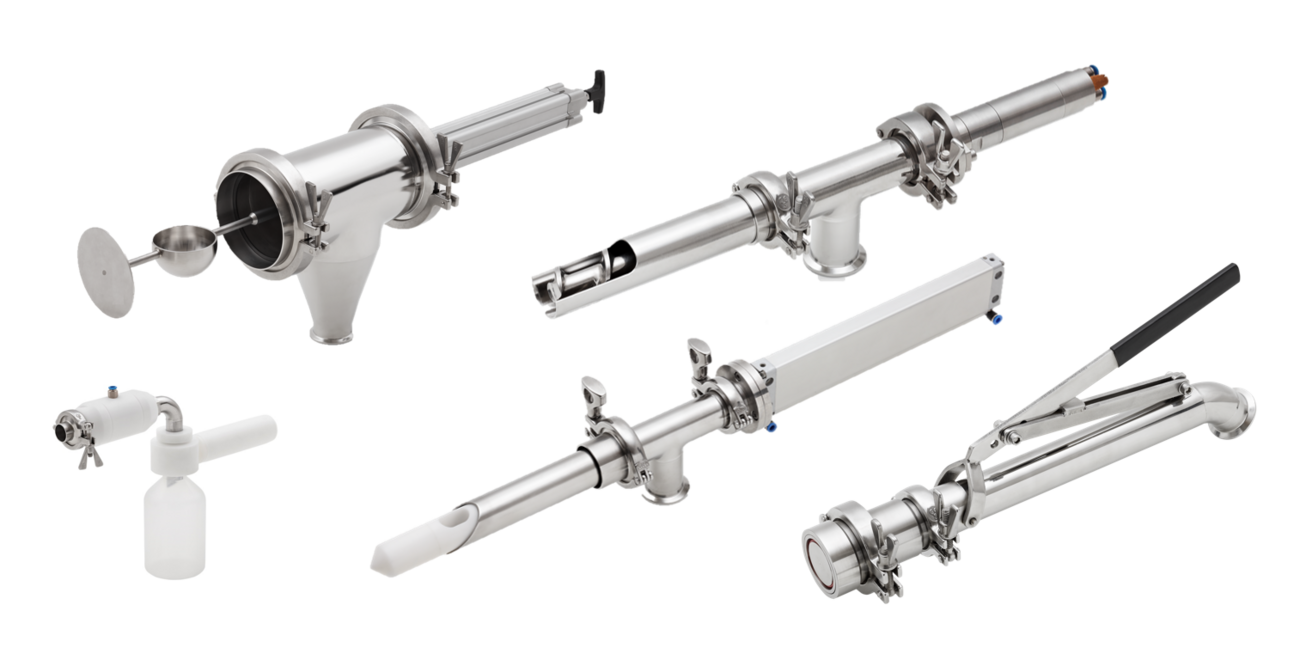Sampling for Quality Control in Industrial Manufacturing
Whether it's pharmaceutical products, animal feed, or minerals – reliable quality assurance today requires companies to constantly monitor to meet prevailing quality standards and ensure seamless traceability. Customers are demanding and expect regulations and quality features to be adhered to. Moreover, due to increasingly complex processes, it's essential that the introduced materials meet the specifications. Depending on the product or process management, dangers to humans and the environment can otherwise arise.
Samplers are used for reliable quality assurance in the following areas:
- At goods receipt to check the delivered quality,
- In production for precise process control, and
- During filling and loading for final inspection.
Sampling and Quality Assurance
A crucial component of quality assurance and process analysis is the representative sampling as a basis for subsequent laboratory examinations. It's widely known that today's analytical technology can detect almost anything in almost any product. However, a highly developed analytical technique alone is not a guarantee for reliable quality control, as the examination result only applies to the tested sample. For an accurate statement about the properties of the total quantity to be made, sampling and preparation, as well as analytical technique, must be precisely coordinated.
What is Representative Sampling?
Sampling is the extraction of a subset from a total quantity, where the subset can be considered representative of the total quantity. The sample must have the same distribution of properties as the total quantity. This means that the material properties in the sample are distributed in the same way as in the total quantity.
The type of sampling strongly depends on which product properties are to be examined. Once the properties to be examined are defined, a method must be found to obtain samples reproducibly.
Influence of Personnel
Ultimately, however, with humans as samplers, there remains a significant uncertainty factor. In practice, auxiliary staff often handle sampling, unaware of the importance of this task and/or lacking sufficient experience with the systems. However, the correct execution of sampling is a crucial step and can have far-reaching consequences, depending on the result.
Error Prevention through Inline Sampling
To reduce sources of error in sampling, the medium-sized company Rembe® Kersting GmbH, Brilon, has developed inline samplers that require minimal operator intervention. Various samplers are offered, tailored to the respective application parameters and material properties. The range extends from cup samplers, screw and piston samplers, to sampling valves.
The inline samplers from Rembe® Kersting meet the following requirements:
Design: Construction and processing are done without edges and undercuts, preventing dirt accumulation. This effectively avoids cross-contamination.
Control: The samplers can be operated in various ways, either manually, pneumatically, or electrically. This has the advantage that they can be easily integrated into the existing process control system and centrally controlled.
Handling: The samplers are easy to operate without extensive prior knowledge. They are also low-maintenance and easy to clean.
In addition to the actual samplers, customers can choose from various systems for storing or transporting the samples. Samples can be filled directly from the sampler into bottles or bags. For sampling over an extended period, a special sample carousel can be used, where the sample bottles are mounted on a rotating plate and can be filled automatically.
Rembe® Kersting GmbH specializes in the distribution and implementation of sampling in the process industry and advises customers from various sectors worldwide on the realization of sampling projects.

